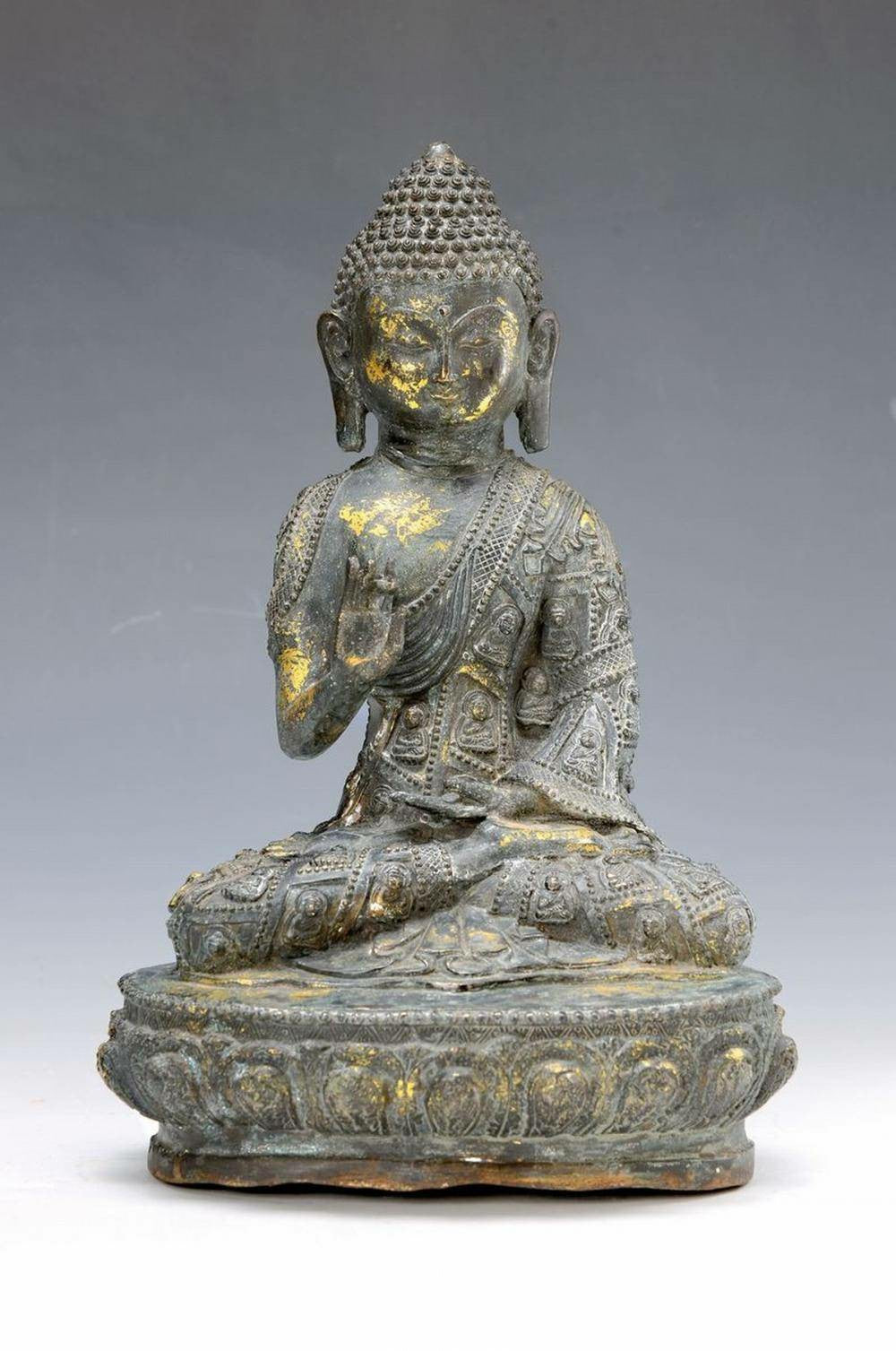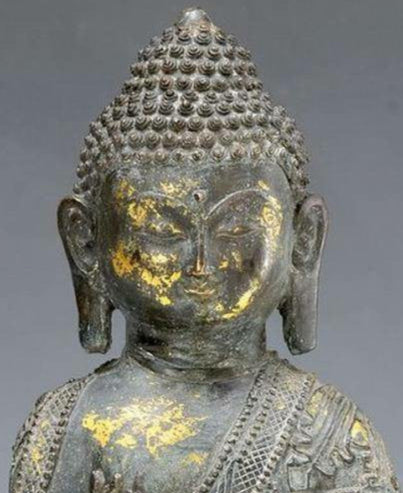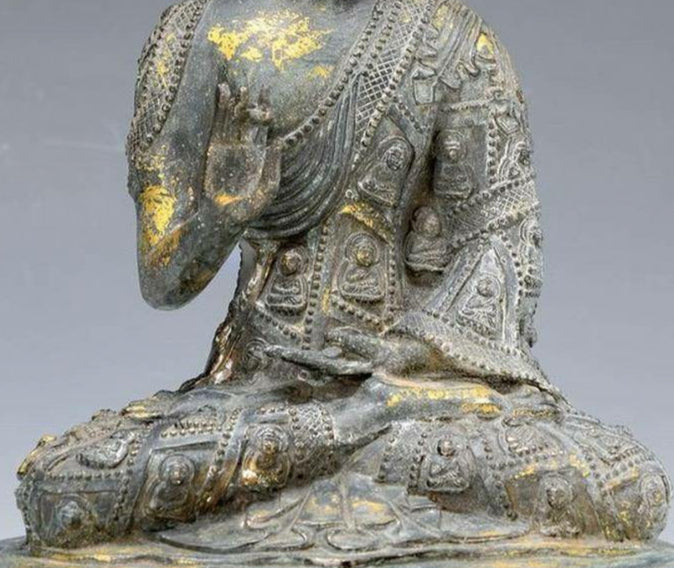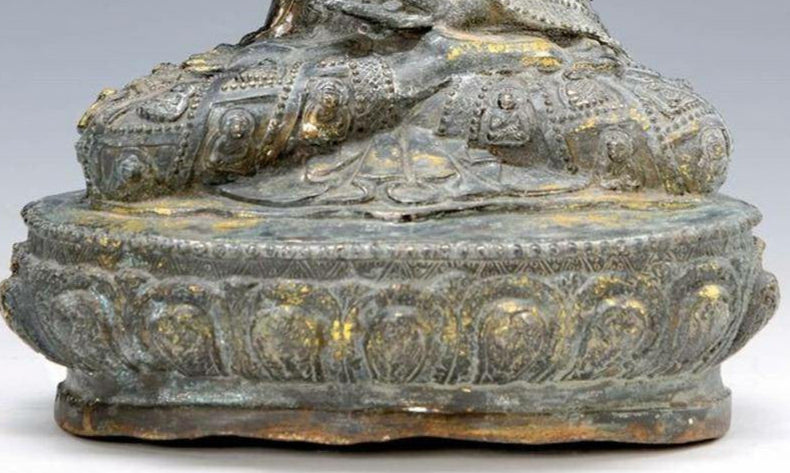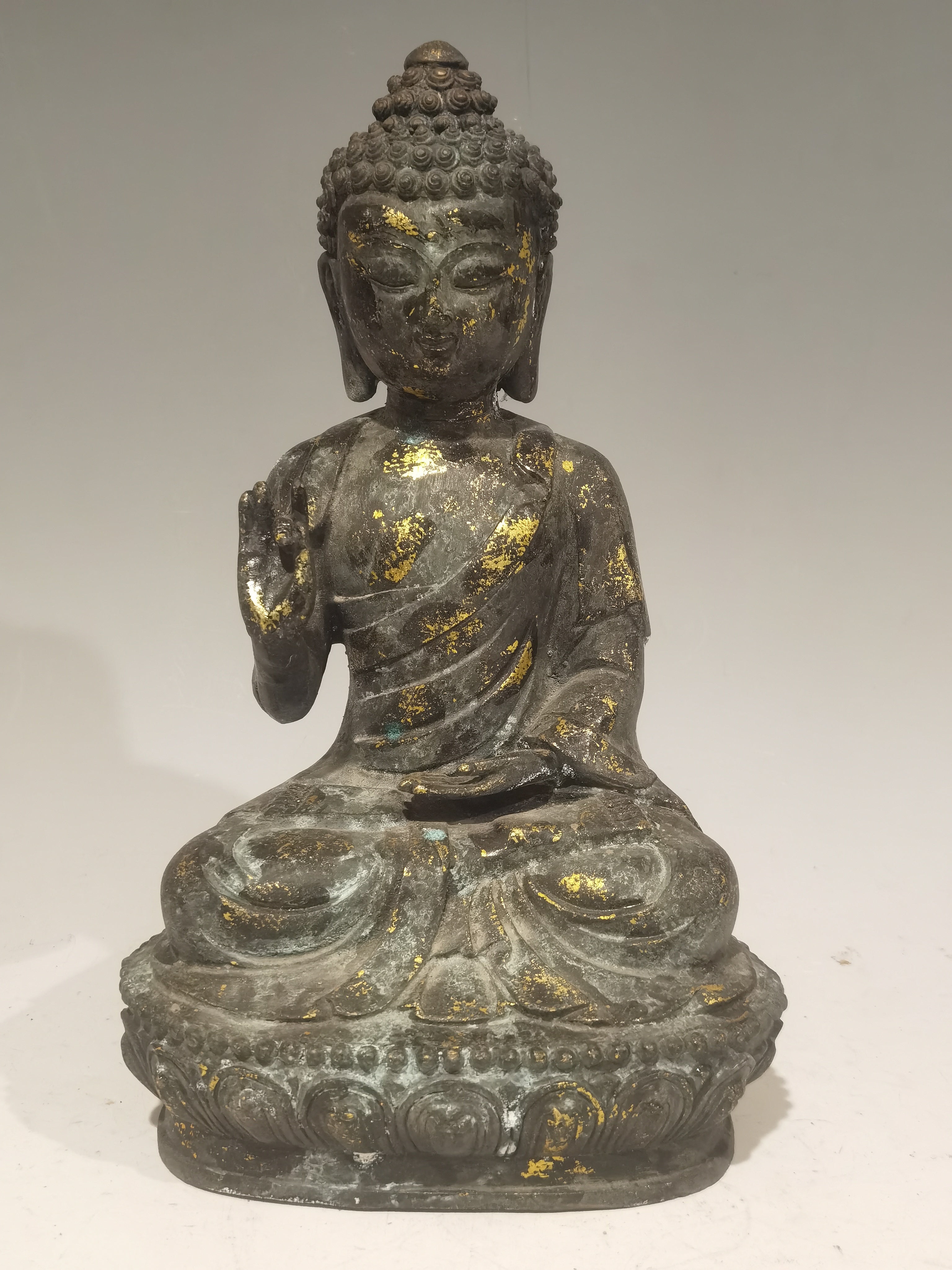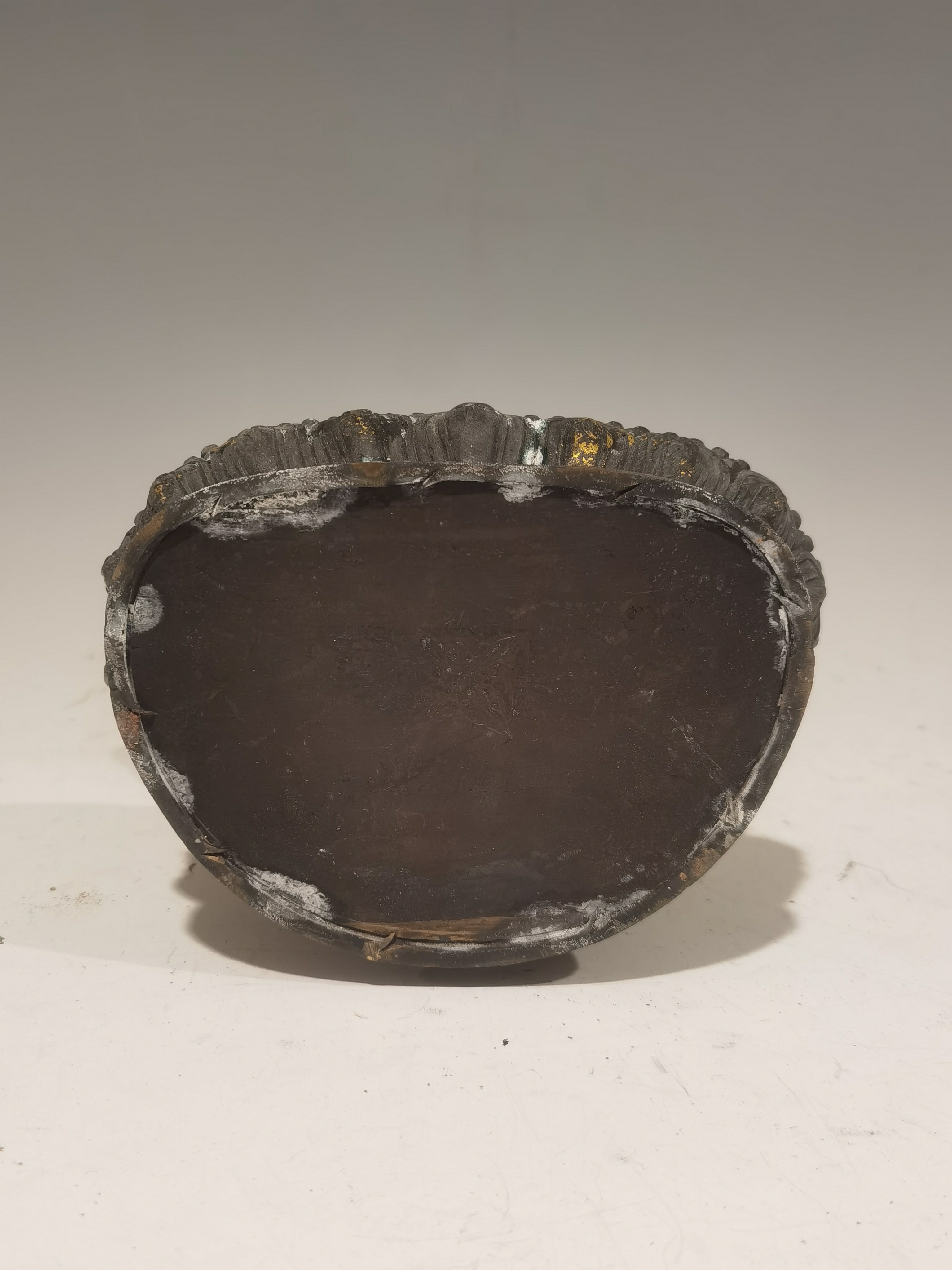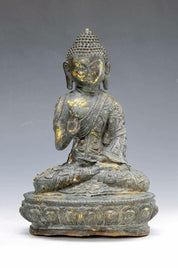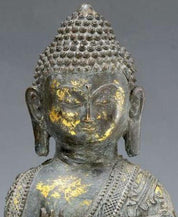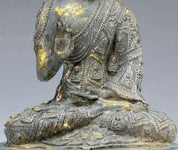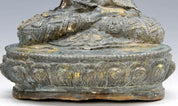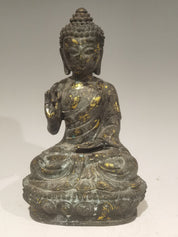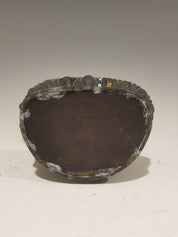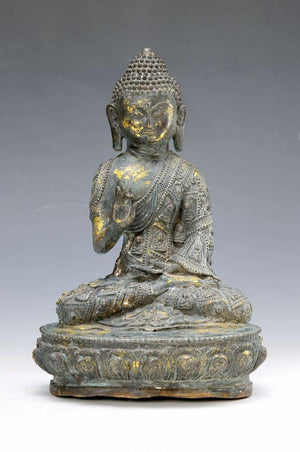Similar Items
Chinese-Tibetan Bronze Buddha
Origin: China-Tibet, 17th-18th Century
Medium: Bronze
Dimensions:
Height: Approximately 30 cm
Width: Approximately 20 cm
Description:
This bronze sculpture depicts a Buddha in a meditative gesture seated on a lotus pedestal. The Buddha's hands are positioned in the meditative mudra, symbolizing concentration and inner peace. The figure is adorned with intricate clothing featuring representations of the "1000 Buddhas." Traces of old gilding adorn the surface, adding to the sculpture's aesthetic appeal. A pearl edge decoration enhances the base, and the proposal of the swastika, a symbol of auspiciousness, is present. Inscriptions on consecration further enrich the historical context of the piece.
Artistic Style and Influences:
The sculpture reflects a blend of Chinese and Tibetan artistic styles prevalent during the 17th and 18th centuries. The detailed clothing and lotus pedestal showcase the craftsmanship typical of Buddhist iconography from this period. The depiction of the Buddha in a meditative posture exemplifies the spiritual significance attributed to such representations in both Chinese and Tibetan Buddhist traditions.
Historical Context:
During the 17th and 18th centuries, China and Tibet experienced significant cultural and religious exchange, particularly in the realm of Buddhism. Artifacts from this period often reflect a synthesis of Chinese and Tibetan artistic influences, as seen in this bronze Buddha sculpture. The presence of inscriptions on consecration suggests that the sculpture held religious significance and may have been used for devotional practices or housed in a sacred space such as a temple or monastery.
Significance:
This bronze Buddha sculpture serves as a valuable artifact of Buddhist religious art, representing the spiritual and cultural connections between China and Tibet during the 17th and 18th centuries. Its intricate craftsmanship and symbolic iconography provide insights into the religious practices and artistic traditions of the time, highlighting the enduring influence of Buddhism in the region. As a museum piece, it contributes to the preservation and appreciation of Buddhist heritage for contemporary audiences.
Popular Items
































